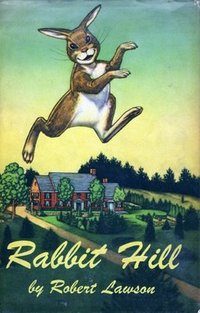
Children's literature or juvenile literature includes stories, books, magazines, and poems that are created for children. Modern children's literature is classified in two different ways: genre or the intended age of the reader, from picture books for the very young to young adult fiction.
William Sherman Pène du Bois was an American writer and illustrator of books for young readers. He is best known for The Twenty-One Balloons, published in April 1947 by Viking Press, for which he won the 1948 Newbery Medal. He was twice a runner-up for the Caldecott Medal for illustrating books written by others, and the two Caldecott Honor picture books, which he also wrote.
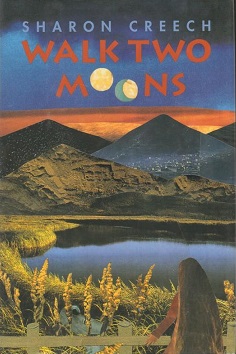
Walk Two Moons is a novel written by Sharon Creech, published by HarperCollins in 1994 and winner of the 1995 Newbery Medal. The novel was originally intended as a follow-up to Creech's previous novel Absolutely Normal Chaos; but, the idea was changed after she began writing it.

John Newbery, considered "The Father of Children's Literature", was an English publisher of books who first made children's literature a sustainable and profitable part of the literary market. He also supported and published the works of Christopher Smart, Oliver Goldsmith and Samuel Johnson. In recognition of his achievements the Newbery Medal was named after him in 1922.
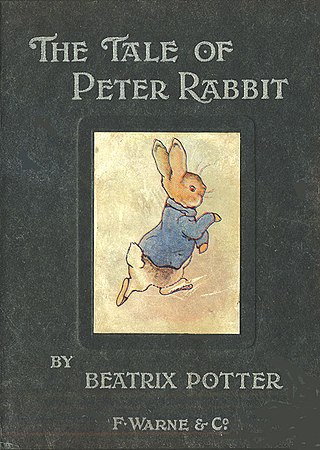
The Tale of Peter Rabbit is a children's book written and illustrated by Beatrix Potter that follows mischievous and disobedient young Peter Rabbit as he gets into, and is chased around, the garden of Mr. McGregor. He escapes and returns home to his mother, who puts him to bed after offering him chamomile tea. The tale was written for five-year-old Noel Moore, the son of Potter's former governess, Annie Carter Moore, in 1893. It was revised and privately printed by Potter in 1901 after several publishers' rejections, but was printed in a trade edition by Frederick Warne & Co. in 1902. The book was a success, and multiple reprints were issued in the years immediately following its debut. It has been translated into 36 languages, and with 45 million copies sold it is one of the best-selling books in history.

Number the Stars is a work of historical fiction by the American author Lois Lowry about the escape of a family of Jews from Copenhagen, Denmark, during World War II.

Shiloh is a Newbery Medal-winning children's novel by Phyllis Reynolds Naylor published in 1991. The 65th book by Naylor, it is the first in a quartet about a young boy and the title character, an abused dog. Naylor decided to write Shiloh after an emotionally taxing experience in West Virginia where she encountered an abused dog.
Robert Lawson was an American writer and illustrator of children's books. He won the Caldecott Medal for his illustrations in They Were Strong and Good in 1941 and the Newbery award for his short story for Rabbit Hill in 1945.
Rachel Lyman Field was an American novelist, poet, and children's fiction writer. She is best known for her work Hitty, Her First Hundred Years. Field also won a National Book Award, Newbery Honor award and two of her books are on the Lewis Carroll Shelf Award list.

Frog and Toad is a series of easy-reader children's books, written and illustrated by American author Arnold Lobel.

Virginia Esther Hamilton was an American children's books author. She wrote 41 books, including M. C. Higgins, the Great (1974), for which she won the U.S. National Book Award in category Children's Books and the Newbery Medal in 1975.
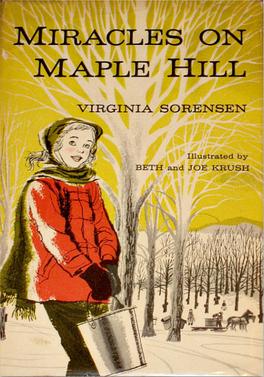
Miracles on Maple Hill is a 1956 novel by Virginia Sorensen that won the 1957 Newbery Medal for excellence in American children's literature. The book was illustrated by Beth and Joe Krush.

Margery Williams Bianco was an English-American author, primarily of popular children's books. A professional writer since the age of nineteen, she achieved lasting fame at forty-one with the 1922 publication of the classic that is her best-known work, The Velveteen Rabbit. She received the Newbery Honor for Winterbound.
Alice Rose Provensen and Martin Provensen were an American couple who illustrated more than 40 children's books together, 19 of which they also wrote and edited. According to Alice, "we were a true collaboration. Martin and I really were one artist."
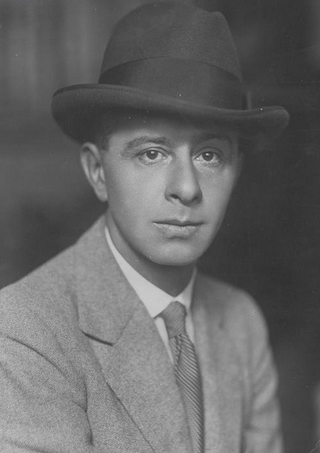
Feodor Stepanovich Rojankovsky, also known as Rojan, was a Russian émigré illustrator. He is well known both for children's book illustration and for erotic art. He won the 1956 Caldecott Medal for U.S. picture book illustration from the American Library Association, recognizing Frog Went A-Courtin' by John Langstaff.

Adam of the Road is a novel by Elizabeth Janet Gray Vining. Vining won the Newbery Medal for excellence in American children's literature in 1943 from the book. Set in thirteenth-century England, the book follows the adventures of a young boy, Adam. After losing his spaniel and minstrel father, Adam embarks on a series of escapades throughout medieval England. The book is illustrated by Robert Lawson.

Gone-Away Lake is a children's novel written by Elizabeth Enright, illustrated by Beth and Joe Krush, and published by Harcourt in 1957. It was a runner-up for the annual Newbery Medal and was named to the Lewis Carroll Shelf Award list in 1970. It tells the story of cousins who spend a summer exploring and discover a lost lake and the two people who still live there.

The Lottery Rose is a 1976 young adult novel by Newbery-winning author Irene Hunt. Though written at a middle-school reading level, this book is also suitable for high school readers due to high-interest subject matter.
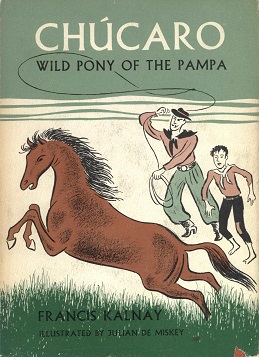
Chúcaro: Wild Pony of the Pampa (1958) is a book written by Francis Kalnay and illustrated by Julian De Miskey. It won Newbery Honor in 1959. Although a work of fiction, it contains factual information about gauchos on the pampas of South America and their way of life, including details about their work, what they wear and eat, and how they entertain themselves.

Incident at Hawk's Hill is a 1971 children's book by naturalist and writer Allan W. Eckert. Supposedly based on a true event, it is a historical novel centering on a six-year-old boy who gets lost on the Canadian prairie and survives for two months thanks to a mother badger. Though the Newbery is an award for children's literature, Incident at Hawk's Hill was originally published as an adult novel. It was a Reader's Digest selection. It was also an American Library Association Notable book.
